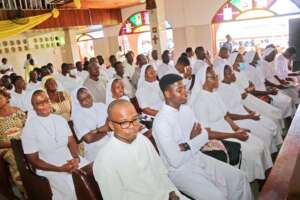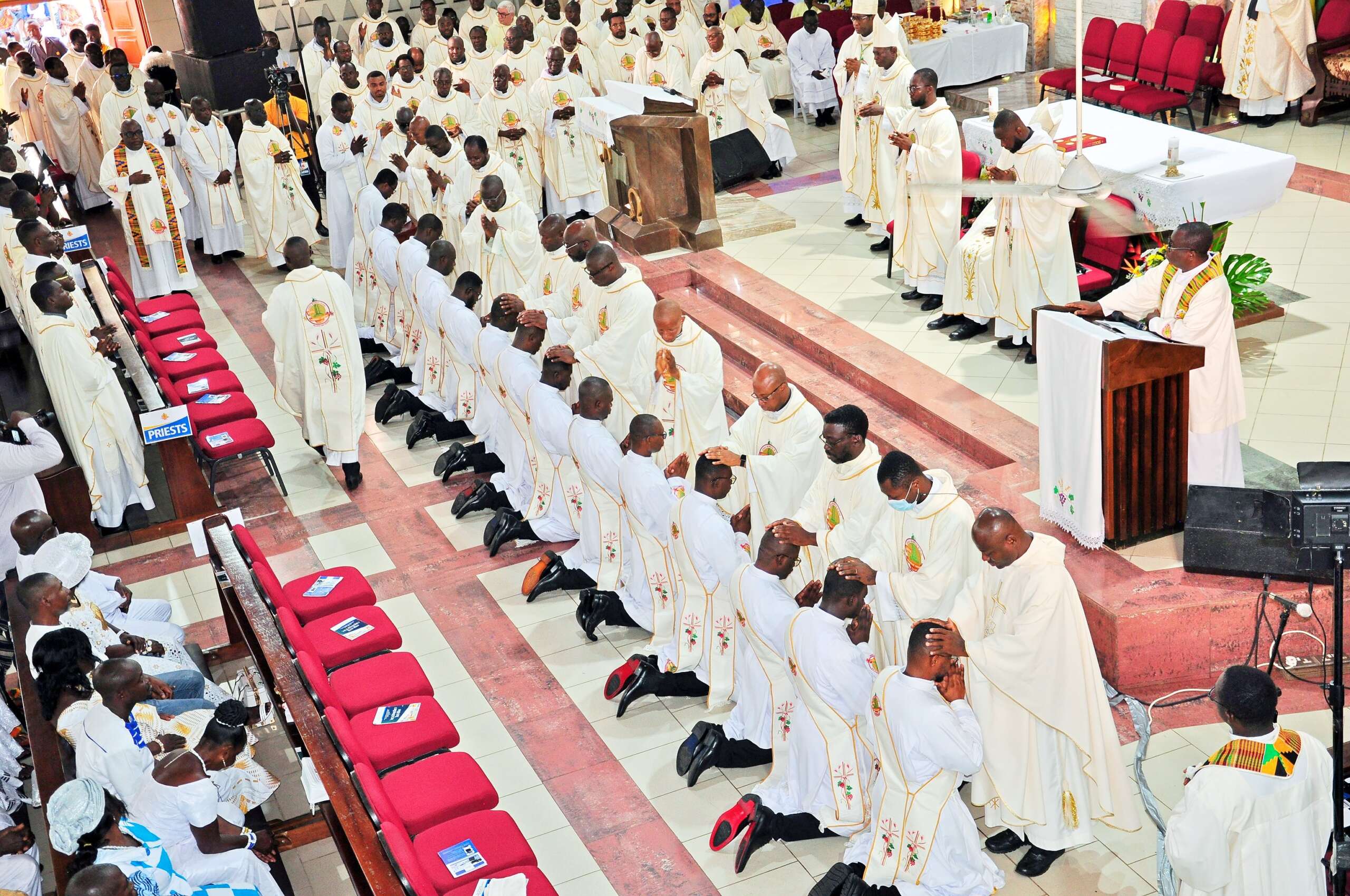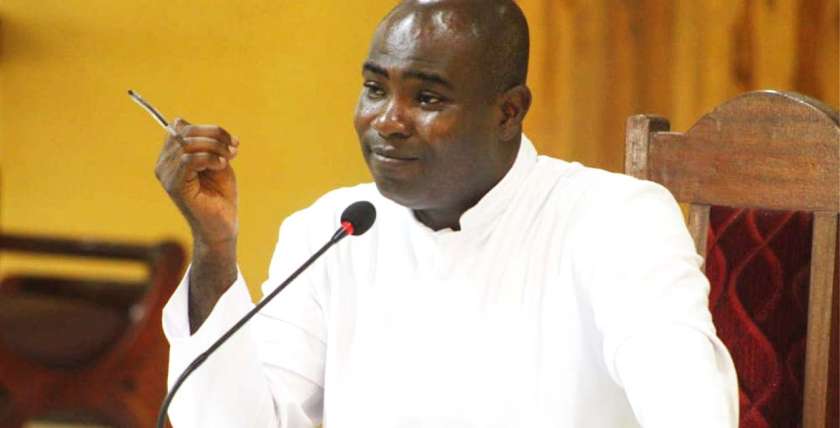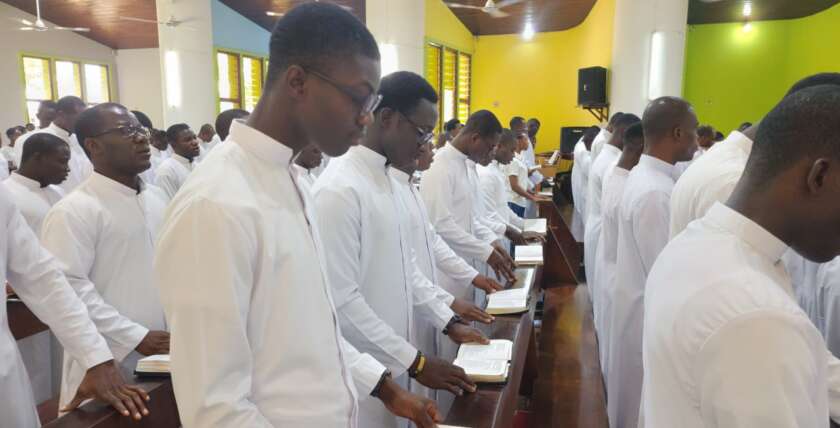Ordination, in the Catholic Church, is generally understood as the act of laying-on of hands by a validly consecrated bishop according to the consecrated prayer prescribed by the Church, through which a baptized male is admitted into one of the degrees of Holy Orders: diaconate, priesthood or episcopacy (cf. cc. 1009 §2; 1012; 1024) . In the Catholic Church, this right is reserved exclusively for the baptized male. This position has been viewed by some critics as an inequality against women in the Church. In recent times, many movements have arisen calling for women ordination as a means of bridging the gap of inequality in the Church. This article seeks to explain the position of the Church on sacred ordination and contribute to the discussion on whether there is an act of discrimination or inequality against women in Catholic ordination.
The Catholic Church has never felt that priestly and episcopal ordination can validly be conferred on women. The Code of Canon Law states unambiguously, “Only a baptized man can validly receive sacred ordination” (c. 1024). This means that a woman cannot be validly ordained in the Catholic Church. The Congregation for the Doctrine of the Faith (CDF) in Norms Regarding Delicts Reserved to the CDF treats the ordination of women and even the attempt of it as a serious crime both on the part of the one who attempts to confer the ordination on a woman and she who receives the ordination and attracts a latae sententiae (ipso facto/ automatic) excommunication the remission of which is reserved to the Pope (Art. 5). In Declaration on the Question of Admission of Women to the Ministerial Priesthood the Church taught that, for doctrinal, theological, and historical reasons, “The Church, in fidelity to the example of the Lord, does not consider herself authorized to admit women to ordination” (CDF, 1976).
The Church’s position on the exclusion of women from sacred ordination is as a result of her determination to remain faithful to her constant tradition, her fidelity to Christ’s will who called only men as apostles and conferred on them the mandate of the priesthood, the apostles careful observance of this practice in choosing successors and the iconic value of male representation due to the sacramental nature of the priesthood. In his 1994 document, Ordinatio Sacerdotalis (OS), Pope John Paul II explained that the priesthood was set out by Jesus Christ himself by calling the twelve apostles after a night of prayer. Thus, women ordination to the priesthood is impossible due to such fundamental reasons as Jesus choosing his apostles only from among men, the constant practice of the Church which has imitated Christ in choosing only men and her living teaching authority which has consistently held that the exclusion of women from the priesthood is in accordance with God’s plan for his church (n. 1, 2). The Pope further states that for theological reasons she is not authorized to ordain women (OS, 1). The Church is the bride of Christ and Christ, the eternal high priest, is her bridegroom (cf. Eph. 5:33-33). The priest who is ordained, and is another Christ, must always be a male to preserve this iconic value of male representation due to this sacramental nature of the priesthood. Since in every sacrament, including the priesthood, the sign must resemble the invisible reality it signifies, it holds true that the male is a more appropriate sign for the priesthood.
The Catholic Church does not see a particular gender to be superior or inferior to the other. At the heart of Catholic Social Teaching is the dignity of human life. The Church upholds the dignity of human life and regards all persons, irrespective of their gender, as equal, products of God’s love, created in God’s own image and likeness. The Church recognizes that human beings were created male and female equally in God’s image and likeness (cf. Gen 1:26-27). However, she acknowledges the differences in roles within these two genders. The Catholic Church is one of the institutions that have always fought for gender equality in our world and has raised the awareness of the world to the fact that man and woman though may play different roles in society, are both the same.
 In the time of Jesus, there were several women who were instrumental in his ministry. However, as the gospels attest, Christ chose those whom he willed after a night of prayer (Mk. 3:13-14; Lk. 6:12-15) and he did so by intentionally choosing twelve men although there were women who were faithful to him and helped him from the beginning of his ministry to the end (Lk.8:1-3). This choice, however, does not depict discrimination against women. Women too received privileged status before the Lord. Mary, Mother of God and of the Church is one example. Pope John Paul II intimates that, “The fact that the blessed Virgin Mary, Mother of God and Mother of the Church, received neither the mission proper to the Apostles nor the ministerial priesthood clearly shows that the non-admission of women to priestly ordination cannot mean that women are of a lesser dignity, nor can it be construed as discrimination against them” (OS, 2).
In the time of Jesus, there were several women who were instrumental in his ministry. However, as the gospels attest, Christ chose those whom he willed after a night of prayer (Mk. 3:13-14; Lk. 6:12-15) and he did so by intentionally choosing twelve men although there were women who were faithful to him and helped him from the beginning of his ministry to the end (Lk.8:1-3). This choice, however, does not depict discrimination against women. Women too received privileged status before the Lord. Mary, Mother of God and of the Church is one example. Pope John Paul II intimates that, “The fact that the blessed Virgin Mary, Mother of God and Mother of the Church, received neither the mission proper to the Apostles nor the ministerial priesthood clearly shows that the non-admission of women to priestly ordination cannot mean that women are of a lesser dignity, nor can it be construed as discrimination against them” (OS, 2).
There is no discrimination in the non-ordination of women in the Catholic Church. Ordaining only the baptized man into the priesthood does not mean the male is superior to the female in the Catholic Church. Even though both male and female are created equally in the image and likeness of God, they differ, and in their difference play varying roles to complement each other. The differences in roles do not mean one is superior or inferior to the other. That is how God created us and it is in no way to suggest that one is higher than the other. Women play a lot of roles and were given lots of duties which the man cannot do and that does not mean she is superior to the man. For instance, a woman can give birth but a man cannot.
Women, although are not ordained into the ministerial priesthood, play key roles in the Church. It is only the Orders that they are not ordained into but they hold different ecclesiastical offices which do not need the exercise of a priestly faculty. They hold leadership positions in the Church from the highest hierarchy down to the lowest. They preach, teach, and are instituted as extra ordinary ministers of the Holy Eucharist, lectors and acolytes, act as Spiritual Directors and direct retreats among others.
In conclusion, the Catholic Church in fidelity to the example of Christ does not consider herself authorized to ordain women into the priesthood. However, this is not a discrimination against women in the Church. Holding on to Scripture, the Church, affirms that man and woman are created equal in the image and likeness of God. However, they both play different roles to complement each other. In the different offices they serve the Church, women are encouraged to, just like the women in Jesus’ ministry, serve the Lord in faithfulness to the end.
REFERENCE
Catholic Church. (2014). Code of Canon Law (1983) Nigeria: Pauline Publications
John Paul II (1994). Apostolic Letter: Ordinatio Sacerdotalis [On Reserving Priestly Ordination to Men Alone]. Leberia Editrice Vaticana: Vatican City
Congregation for the Doctrine of the Faith (1976). Declaration on the Question of Women Ordination to the Ministerial Priesthood. Retrieved on October 25, 2023 from https://www.vatican.va/roman_curia/congregations/cfaith/documents/rc_con_cfaith_doc_ 19761015_inter-insigniores_en.html
___ (2010). Norms Regarding Delicts Reserved to the CDF. Retrieved on October 24, 2023 from https://www.vatican.va/roman_curia/congregations/cfaith/documents/rc_con_cfaith_doc_ 202110 11_norme-delittiriservati-cfaith_en.html





